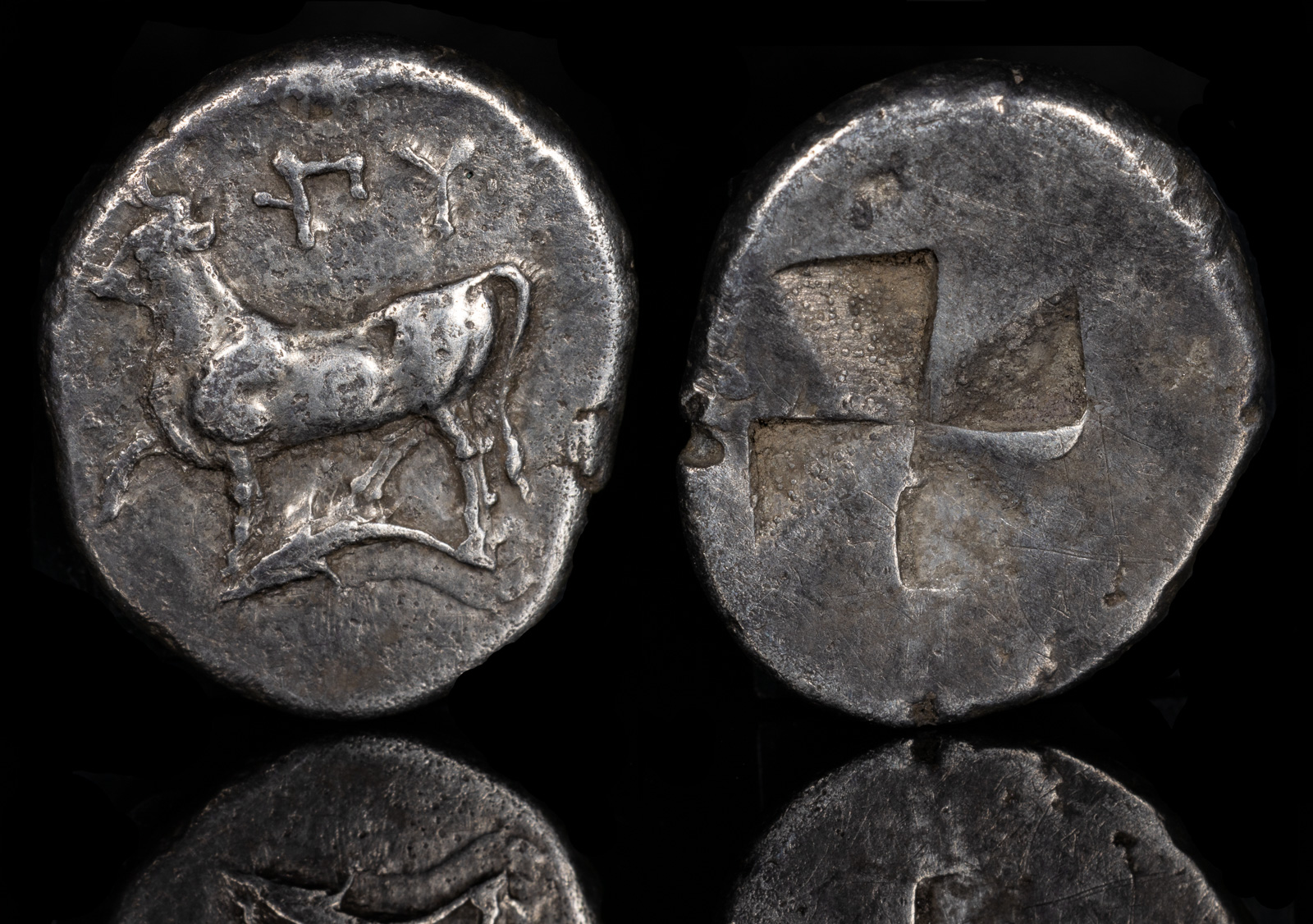
Thrace, Byzantion
AR Siglos 340-320 BCE
5.24g 18.02mm
Bull standing left on a dolphin, monogram of Byzantion above. Incuse wind-sail pattern.
SNG Cop 475-477
Who founded Istanbul? Well, that was technically Sultan Mehmed II, who conquered and renamed the city. But who founded the actual city? The wrong answer is Constantine the Great. All he did was rename it. In truth, we don’t know.
What we do know is that Constantinople was no more the original name than Istanbul. Before that it was called Byzantion. That also wasn’t the original name, as before that it was called Lygos. Before that it was named Snorgasnorga, and I dare you to find proof that I’m wrong.
Nevertheless, during the Hellenistic period it was known as Byzantion, and due to its strategic position, it played a major part in events. It was a major target of Philip II, who started by besieging its neighbor Perinthos. Since the two cities were best buddies, Byzantion helped prevent Philip‘s success by sending aid.
This pissed Philip off, so he sent half his army to besiege Byzantion as well. Despite many of their soldiers being in Perinthos, they resisted. Also a major thorn to the side of Philip, was a naval blockage by Athens.
Eventually things got to a boiling plate between Philip II and Athens, so the Athenians sent their top general Chares, who was promptly thrown out of Byzantion and subsequently looted several of Byzantion’s allies. Since this wasn’t at all what Athens wanted, they replaced Chares with other commanders, and subsequently thwarted Philip‘s goals and forced him to retreat.
This was only a temporary loss for Philip, though, as after he defeated the combined forces of Athens and Thebes at the Battle of Chaeronea, Byzantion had to make an agreement with Philip.
Roughly thirty years later, Byzantion was again the center of conflict in 317 BCE during the Era of the Diadochi. Kleitos the White, who was on the side of Polyperchon, faced off against Antigonos‘ naval commander Nikanor. Kleitos won a tremendous victory, and so he decided to party like it was 333 BCE.
He landed his fleet ashore and had a big celebration. Unfortunately, Antigonos himself found them encamped on the shore and annihilated them. He was aided by Byzantion in the endeavour, as they helped transport his army to the spot.
Byzantion is founded by Byzas of Megara.
Sparta takes Byzantion in an effort to force Athens into submission.
Eresos, Byzantion, Chios,Mytilene, Methymna, Rhodes, Thebes, Korkyra, Eretria, Kios, Samos, Naxos, Andros, Myrina (Lembos), Hephaistia, Imbros, and Thasos join the Second Athenian League, reaffirming its alliance with Athens in response to the growing threat of Persian interference and internal Greek conflicts.
355 BCE
Memnon of Rhodes aids Byzantion in withholding a siege by Philip II.
Antigonos Monophthalmos destroys the fleet of Polyperchon near Byzantion.
Kleitos the White, commanding the fleet of Polyperchon, decisively defeats Nikanor near Byzantion, then lands ashore to celebrate and is attacked by Antigonos Monophthalmos. The remnants of his fleet are destroyed by Nikanor. Kleitor the White escapes ashore where he is killed by men of Lysimachos.
The Gauls besiege Byzantion.
Byzantion sides with Pescennius Niger over Septimius Severus, Roman forces besiege the city and cause considerable damage.
April
Maximinus Daza takes Constantinople from Licinius.
Constantine I refounds Byzantion as an imperial residence named Nova Roma.
May 11
The city of Nova Roma, formerly known as Byzantion, is renamed to Constantinople by Constantine the Great.
December 25
Constans elevated to Caesar at Constantinople by Constantine I
December 11
Julian II enters Constantinople as the sole Emperor.
November
Theodosius moves his court to Constantinople.
Theodosius leaves Constantinople to fight the Arbogastes and Eugenius and leaves Arcadius nominally in charge.
Aelia Eudoxia and John Chrysostom’s dispute reaches its peak. John Chrysostom is deposed and exiled by Arcadius, largely due to Eudoxia’s influence. She erects a silver statue of herself in the Forum of Constantinople, which John condemned in his sermons.
August 25
The author of this page visits Istanbul and sees some ruins from Byzantion, but does not photograph them because the shot isn’t great.